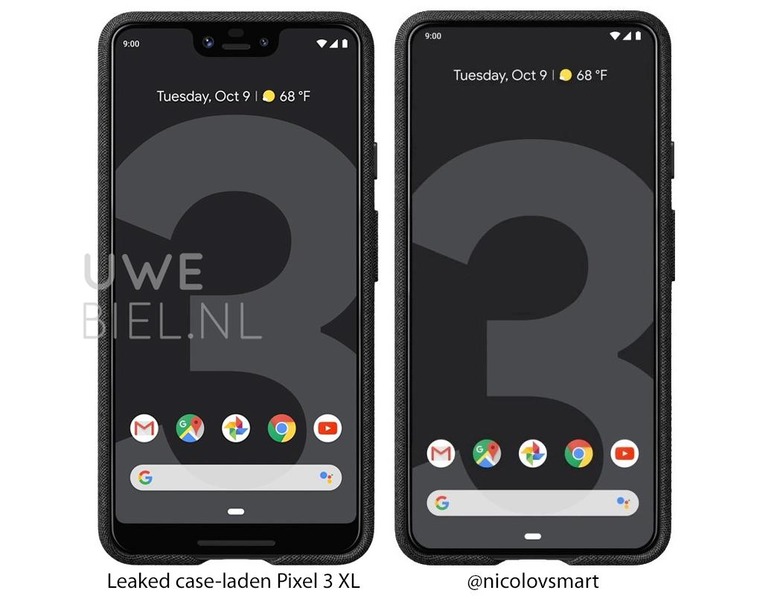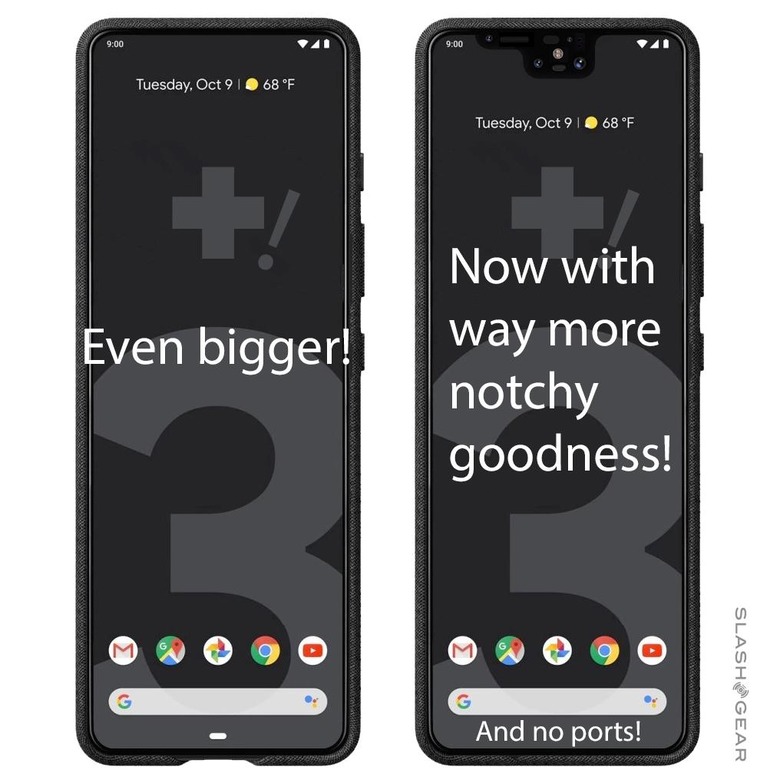Pixel Ultra Trickery: It's Easy To Fake A Flat Smartphone
Another misleadingly realistic image of a so-called "Google Pixel Ultra" is in the process of snapping up clicks across the web. This one's using a previously leaked image of a Pixel 3 XL to act as a starting point for an edited final product. With an application like Photoshop, making one image into another – especially one like this – is super simple.
If you'll take a look at the left image below, then the right image below, you'll notice some similarities. These are both built with the same graphic elements. Notice the slight change in the thickness of the white lines to the left and right of the display, on the "Ultra" version. Not quite perfect.

The ease with which this sort of image is falsified comes largely because the original is also a rendering. Google uses renderings when delivering production-level marketing materials. This case and this phone were meant for the Google Store online. As such, they must be perfect. They must be rendered, not photographed.
Our eyes are trained to expect a certain level of perfection when an image is rendered – and another level of imperfection when we're viewing a photograph. Here we're expecting regularity in the elements at hand – so it's easier to fake. I've gone ahead and made a couple more Google Pixel Ultra models for you to peruse, while we're at it.

Look at how tall that phone is! It's huge! Look at the other one – it is also huge, and it doesn't need that pesky USB-C port! It also has a very strange notch with all sorts of sensors and cameras, and a speaker and an LED flash, too, because ALL THE THINGS must be here! It's Ultra, after all, right? Have a peek at the timeline of articles below to read more about the next Google Pixel lineup – without the Ultra. Seek especially the article called "Pixel 3 and our desperate need to be surprised and delighted"!
